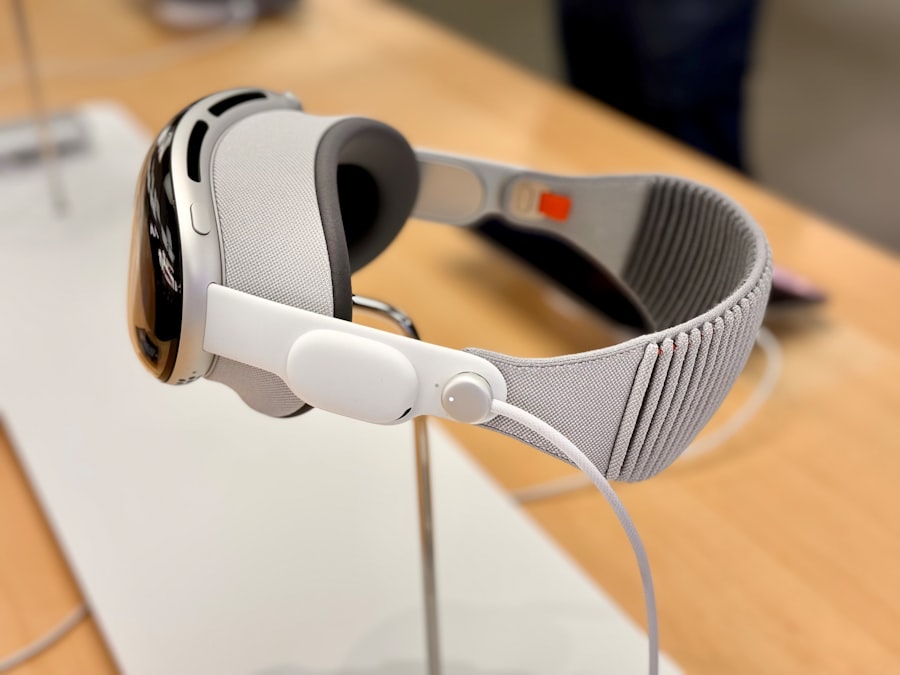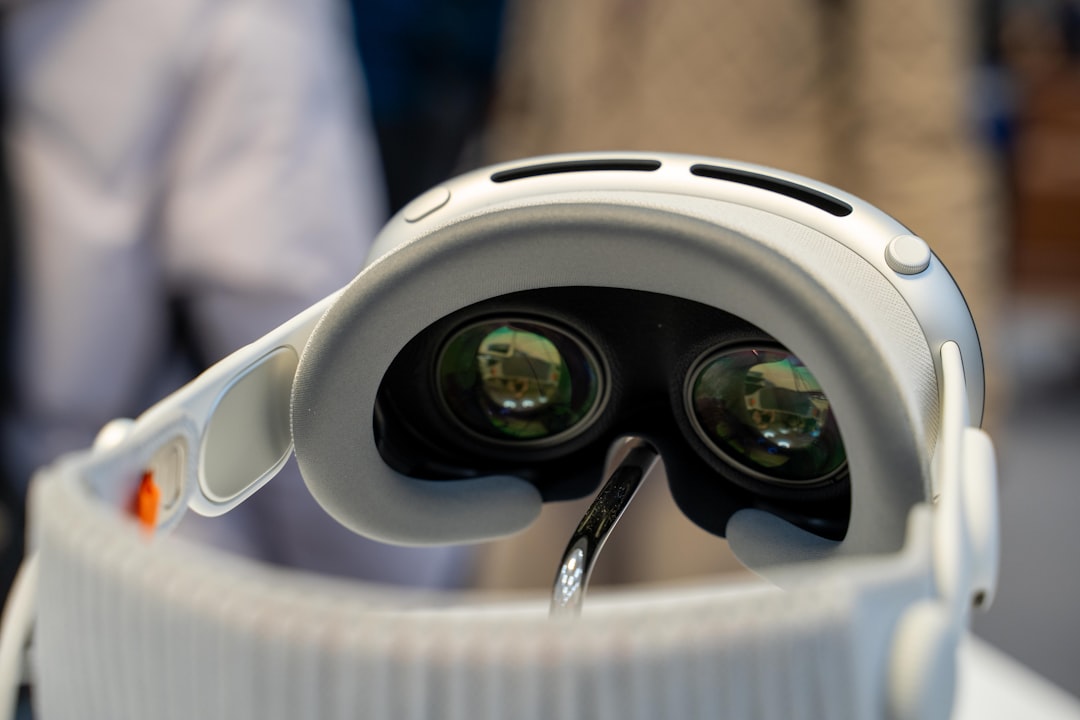The evolution of virtual reality (VR) technology has been nothing short of remarkable, transitioning from a niche concept to a mainstream phenomenon. The roots of VR can be traced back to the 1960s, with early experiments like the Sensorama and the first head-mounted display, the Sword of Damocles. However, it wasn’t until the 21st century that technological advancements in computing power, graphics rendering, and motion tracking began to coalesce, paving the way for more sophisticated and accessible VR experiences.
Companies like Oculus, HTC, and Sony have played pivotal roles in this transformation, launching consumer-friendly headsets that have captured the imagination of gamers, educators, and professionals alike. The surge in interest surrounding VR can also be attributed to its applications beyond entertainment. As industries recognize the potential of immersive technology for training, simulation, and design, investment in VR has skyrocketed.
The COVID-19 pandemic further accelerated this trend, as remote work and social distancing measures prompted organizations to seek innovative solutions for collaboration and engagement. Virtual reality emerged as a powerful tool for creating shared experiences in a time when physical presence was limited. This convergence of technological capability and societal need has set the stage for VR to become an integral part of our daily lives.
Key Takeaways
- Virtual reality technology has seen a significant rise in popularity and accessibility in recent years.
- Understanding the basics of virtual reality, including how it works and its potential applications, is essential for navigating the virtual reality world.
- Navigating the virtual reality world can lead to immersive experiences that can transport users to different environments and scenarios.
- There are various virtual reality platforms and devices available, each offering unique features and experiences for users to explore.
- Virtual reality has the potential to impact various industries, from entertainment and gaming to healthcare and education, in significant ways.
Understanding the Basics of Virtual Reality
At its core, virtual reality is a computer-generated environment that simulates a realistic experience, allowing users to interact with 3D worlds in a seemingly tangible way. This immersive experience is typically achieved through the use of VR headsets equipped with sensors that track head movements and adjust the visual display accordingly. The technology relies on a combination of hardware and software to create a seamless experience that can trick the brain into believing it is in a different place altogether.
The fundamental components of VR include visual displays, audio systems, and input devices. Most VR headsets feature stereoscopic displays that provide depth perception by presenting slightly different images to each eye. This creates a three-dimensional effect that enhances immersion.
Input devices such as motion controllers or gloves allow users to interact with the virtual environment, making actions like grabbing objects or navigating menus feel intuitive and natural.

Entering a virtual reality environment can be both exhilarating and disorienting for newcomers. Upon donning a VR headset, users are often greeted by a virtual lobby or menu where they can select experiences or games to explore. The initial moments can be overwhelming as users adjust to the new sensory inputs; however, most modern VR systems are designed with user comfort in mind.
Many platforms offer tutorials or guided experiences to help users acclimate to their surroundings and learn how to navigate effectively. Once users become accustomed to the virtual space, they can expect a range of interactions that vary depending on the application. In gaming scenarios, players might find themselves immersed in fantastical worlds where they can engage in combat, solve puzzles, or explore vast landscapes.
In educational settings, users may participate in simulations that allow them to practice skills in a safe environment, such as performing surgery or conducting scientific experiments. The versatility of VR means that each experience can be tailored to meet specific needs, whether for entertainment or professional development.
Immersive Experiences in Virtual Reality
| Metrics | Value |
|---|---|
| Number of VR headsets sold | 10 million |
| Percentage of gamers using VR | 15% |
| Number of VR apps available | 2000 |
| Percentage of businesses using VR for training | 40% |
The hallmark of virtual reality is its ability to create deeply immersive experiences that engage multiple senses simultaneously. This immersion is not merely visual; it encompasses auditory and tactile sensations as well. For instance, in a VR game set in a medieval castle, players might hear the clanging of swords and the distant sounds of a bustling marketplace while feeling the weight of their virtual weapons through haptic feedback in their controllers.
Such multisensory engagement enhances the realism of the experience and fosters emotional connections with the virtual world. Moreover, developers are continually pushing the boundaries of immersion through advancements in technology. Innovations such as full-body tracking systems allow users to see their own avatars move in sync with their real-world actions, creating a more authentic sense of presence.
Additionally, environmental factors like temperature changes or wind simulations can further enhance immersion by mimicking real-world sensations. As these technologies evolve, the potential for creating even more compelling experiences grows exponentially.
Exploring Different Virtual Reality Platforms and Devices
The landscape of virtual reality platforms and devices is diverse, catering to various preferences and budgets. At the forefront are standalone headsets like the Oculus Quest series, which offer wireless freedom without the need for external sensors or powerful gaming PCs. These devices have democratized access to VR by providing an all-in-one solution that is easy to set up and use.
Users can download games and applications directly onto the headset, making it an appealing option for casual gamers and newcomers alike. On the other end of the spectrum are high-end systems like the Valve Index or HTC Vive Pro, which require powerful computers and external sensors for optimal performance. These setups provide unparalleled graphics quality and tracking precision, making them ideal for enthusiasts seeking the most immersive experiences available.
Additionally, there are mobile VR options that utilize smartphones as displays within headsets like Google Cardboard or Samsung Gear VR. While these may not offer the same level of immersion as dedicated systems, they serve as an accessible entry point for those curious about virtual reality.
The Impact of Virtual Reality on Various Industries

Virtual reality’s influence extends far beyond gaming; it has begun to reshape numerous industries by offering innovative solutions to longstanding challenges. In healthcare, for example, VR is being utilized for surgical training and patient rehabilitation. Medical professionals can practice complex procedures in a risk-free environment, honing their skills before operating on real patients.
The education sector has also embraced virtual reality as a powerful teaching tool. Classrooms can transform into interactive learning environments where students explore historical sites or conduct scientific experiments without leaving their desks.
For instance, platforms like Google Expeditions enable students to take virtual field trips to places like the Great Barrier Reef or ancient Rome, enriching their understanding of complex subjects through experiential learning. As more industries recognize the potential benefits of VR technology, its applications will likely continue to expand.
Virtual Reality Ethics and Considerations
As with any emerging technology, virtual reality raises important ethical considerations that must be addressed as it becomes more integrated into society. One significant concern is user safety; prolonged exposure to VR can lead to discomfort or motion sickness for some individuals. Developers must prioritize user comfort by designing experiences that minimize these risks while also providing clear guidelines on usage duration.
Another ethical consideration revolves around data privacy and security. Many VR applications require access to personal information or utilize tracking technologies that monitor user behavior within virtual environments. Ensuring that this data is handled responsibly and transparently is crucial to maintaining user trust.
Additionally, as VR becomes more prevalent in social interactions—such as virtual meetings or gatherings—issues related to identity representation and harassment may arise, necessitating robust policies and moderation strategies.
The Future of Virtual Reality: What’s Next?
Looking ahead, the future of virtual reality appears promising as technology continues to advance at an unprecedented pace. One area poised for significant growth is social VR, where users can interact with one another in shared virtual spaces. Platforms like Horizon Worlds are already exploring this concept by allowing users to create and customize their own environments while engaging with friends or strangers from around the globe.
As social interactions increasingly shift online, VR could provide a more immersive alternative to traditional video conferencing tools. Moreover, advancements in hardware will likely lead to lighter, more comfortable headsets with improved graphics capabilities and longer battery life. The integration of artificial intelligence into VR experiences could also enhance personalization by adapting content based on user preferences and behaviors.
As these developments unfold, virtual reality has the potential not only to transform entertainment but also to redefine how we learn, work, and connect with one another in an increasingly digital world.
If you’re interested in exploring more about the future trends and innovations within the metaverse, you might find the article “Future Trends and Innovations in the Metaverse Industry: Projections in the Metaverse” particularly enlightening. This article delves into the anticipated developments and technological advancements that are expected to shape the metaverse in the coming years. For a deeper understanding, you can read the full article here.
FAQs
What is a virtual reality world?
A virtual reality world is a computer-generated environment that simulates a physical presence in a real or imagined world, allowing the user to interact with the environment and other users.
How does virtual reality work?
Virtual reality works by using a combination of hardware and software to create a simulated environment. This typically involves a headset or goggles to display the virtual world, along with motion sensors and controllers to track the user’s movements and interactions.
What are the applications of virtual reality worlds?
Virtual reality worlds have a wide range of applications, including gaming, education, training, therapy, and virtual tourism. They can also be used for virtual meetings and social interactions.
What are the benefits of virtual reality worlds?
Virtual reality worlds can provide immersive and interactive experiences, allowing users to explore new environments, learn new skills, and engage in realistic simulations. They can also be used for therapeutic purposes, such as exposure therapy for phobias.
What are the limitations of virtual reality worlds?
Some limitations of virtual reality worlds include the potential for motion sickness, the need for expensive hardware, and the risk of disconnection from reality. There are also concerns about privacy and safety in virtual environments.

Leave a Reply